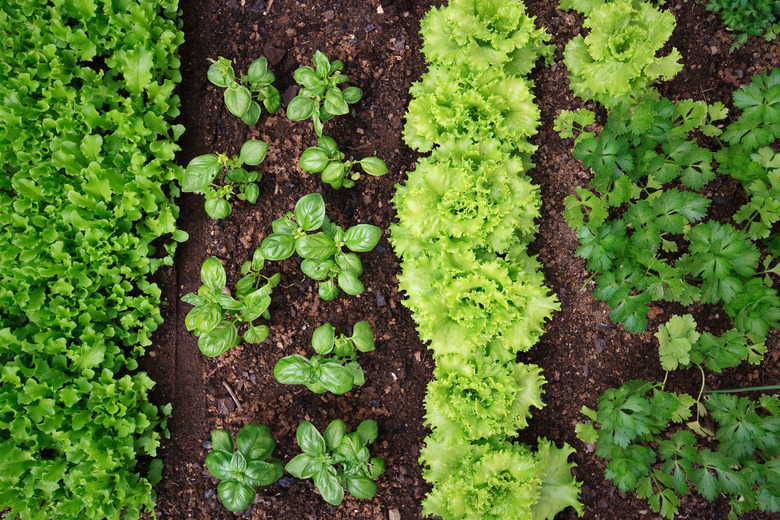A List Of Edible Leaves
We may receive a commission on purchases made from links.
Leafy greens and edible leaves are an important part of a nutritious diet. They are full of essential vitamins, minerals, and antioxidants, helping to prevent disease and providing a multitude of health benefits. With a range of flavors and textures, adding edible leaves — especially dark, leafy greens — to your menu is a tasty way to enhance your health. Many leafy greens are easy to grow right at home.
There are many varieties of edible leaves in addition to those listed. But this guide can give you a better understanding of the edible leaves you are already eating as well as some information on a few less common examples.
A Guide to Edible Leaves
A Guide to Edible Leaves
Leafy greens are appealing to the health conscious not just for their high levels of vitamins, minerals, and fiber but also for their low glycemic index, calorie count, and carbohydrate content. Edible greens are great for salads and also work well when added to many recipes, from soups to stir-fries to scrambles. You can also sauté and steam tougher leaves, like kale and collard greens, or even use large leaves for a wrap in place of a tortilla or pita bread. Dried and fresh herbs, such as parsley, basil, and sage, are also edible leaves.
Popular Edible Leaves
Popular Edible Leaves
Lettuce is probably the most common of the edible leaves. It supplies fiber, cellulose, and omega-3 fatty acids while being low in calories and fat-free. There are many varieties of lettuce, including iceberg, romaine, butterhead (including Boston and bibb), and leaf lettuce (including red, green, and oak).
Spinach is a popular and readily available edible leaf. Spinach is very versatile in recipes, both raw and cooked, and it is an excellent source of iron, making it a good choice for those who have anemia. Chard is another versatile green leaf. The tender, young leaves are a delicious addition to salads, while the larger, older leaves favor being cooked or stewed. Chard is wonderful source of vitamins A and C, and some cultivars feature stalks in a multitude of colors.
Kale, used in smoothies, soups, and salads, has so many essential vitamins (including vitamins A, C, and B6, as well as calcium and iron) that it has become known as a superfood.
Uncommon Edible Leaves
Uncommon Edible Leaves
You've probably heard of goji berries, another superfood rich in antioxidants and amino acids, but you may not know that goji leaves are also edible. While they tend to be bitter when eaten raw, the flavor mellows when added to soup or stir-fried.
Leaves from the linden tree are not only edible but can also be used to treat colds and coughs by boiling them to make a medicinal tea. While most large trees have leaves that are tough and even toxic, linden tree leaves make a suitable replacement for lettuce in salads and sandwiches.
The next time you have celery, don't throw out the leaves. Celery leaves are not only full of nutrition but also that characteristic celery flavor. Add the leaves to sauces and spreads as you would a fresh herb for a mild spice.
Leaves You May Not Have Known Were Edible
Leaves You May Not Have Known Were Edible
Purslane grows as a common weed, but its delicate flavor, reminiscent of lemon, is delicious in a summertime salad. Dandelion, another edible weed, has more nutrients than many in the superfood category and also has many medicinal properties. Though bitter, the leaves can be used to replace arugula in salads, or they can be sautéed.
Harvested early before any adult leaves can develop, microgreens are the seedlings of herbs and vegetables. Grown easily on a kitchen counter, the tiny shoots of microgreens not only provide an intense flavor profile but also a more highly concentrated nutrient ratio than their adult counterparts.
References
- Permaculture Research Institute: 7 Perennial Shrubs and Trees With Edible Leaves
- Country Living: 10 Plants, Greens and Leaves You Didn't Know You Could Eat
- USDA Agricultural Research Service: Dark Green Leafy Vegetables
- All Recipes: 10 Types of Lettuce (And Other Leafy Salad Greens) You Should Know
- Britannica: Chard
- Britannica: Spinach
- Britannica: Kale
- Time: Why is Kale So Good For You?
- Gardeners: How To Grow Microgreens
